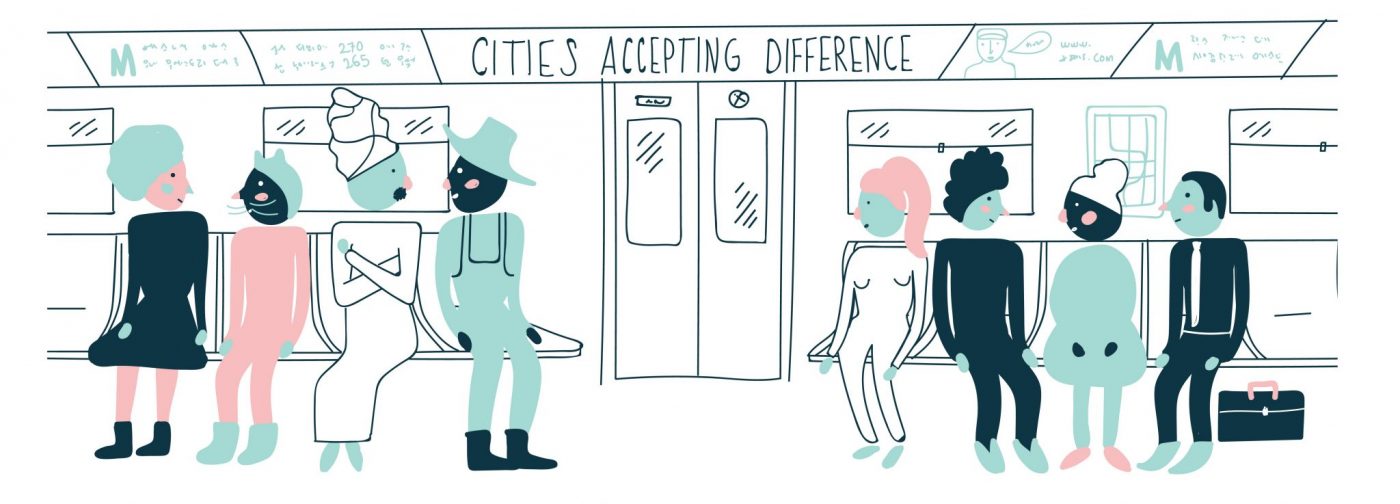
When I think about the just city, it’s always black and white
I was born in Chicago the evening before President Lyndon Johnson signed the Civil Rights Act of 1964 into law. Growing up on the south side of Chicago meant that on an average day, I rarely saw or interacted with a person who didn’t look like me. All of my basic needs were met on the south side of Chicago—schooling, shopping, summer jobs, recreation and entertainment. My teachers were predominately black, and my classmates were 98 percent black. This environment did not make me feel isolated, segregated or unusual—I just felt normal.
I offer ten values as my initial metrics for designing for the just city.
My just city is black and white because I grew up in a racially segregated city
I certainly did not realize how much of an impact Chicago’s urban form and spatial patterns would have on my perspective about cities. Nor was I aware of the profound impact that Chicago would have on my interactions with fellow urbanites and the work to which I would come to devote my career.
My work in architecture, urban design and urban planning spans several cities in the U.S., including Chicago, New York, Washington, Newark, Detroit and Memphis. All of these cities have similar racial patterns of segregation, and all have similar urban conditions, thanks to the impact of segregation on people and place. I would eventually come to know these urban conditions as the environments of social and spatial injustice. I now simply call them the conditions of urban injustice or justice. I define urban justice as the factors that contribute to our economic, human health, civic and cultural well-being, as well as the factors that contribute to the environmental and aesthetic health of the built environment.
There are three conditions of urban injustice that I always seem to confront in my work in cities—conditions that began to reach the height of national awareness at the time of my birth in 1960s Chicago.
The first urban injustice condition is concentrated poverty
On the ground, spatial segregation has created pockets of concentrated poverty in our cities that, in turn, have created spatial and social isolation of those cities’ residents. Over multiple generations, this isolation has had a devastating impact on family structures, social networks, educational systems and access to economic opportunity.
For example, in Newark, N.J., where I served as the director of planning and community development for newly elected Mayor Cory Booker between 2007 and 2009, nearly 50 percent of all the people living in the central ward of the city lived in poverty, a condition that has persisted since a federal slum clearance boundary was drawn around the same area in 1961 and which suggests multiple generations of concentrated poverty.
The second urban injustice condition is disinvestment, crime and the architecture of fear
In the mid-1960s, attempts were made to revitalize the center city through programs such as Model Cities, a federal program that brought funding for redevelopment into communities with the greatest social and physical deterioration. However, the civil unrest of 1967 deepened disinvestment, and the city’s reputation for high crime and political corruption limited its ability to attract widespread capital investment for many decades.
At the height of disinvestment and the federal programs designed to reverse this trend, including Model Cities and Urban Renewal, developers and institutions that felt unable to control the disinvested and crime-ridden environments around their land holdings directed architects to protect them from the adjacent urban decay via windowless recreation centers to keep children safe, elevated and enclosed skywalks from Newark Penn Station to the Gateway Center office campus that removed people from the dangerous streets, and a public community college constructed with uninviting, barrier-like building materials that created a fortress, protecting knowledge from the very public it was situated to serve.
And the third urban injustice condition is socio-economic division
From 2000 to 2006, while serving as deputy planning director under Washington Mayor Anthony A. Williams, I saw that spatial segregation sharply divided the city along the north-south axis marked by Rock Creek Park and the Potomac River, separating rich and poor residents by employment status, income and educational attainment. Fifteen years later, residents of color see that this dividing line is pushing swiftly eastward; they fear they will be pushed across the Anacostia River and, ultimately, outside the city limits.
My just city is also for women, children and people of color (or what the PolicyLink CEO, Angela Blackwell Glover, calls “the least not”)
At the center of these environments of urban injustice, I find an increasing number of women, children, immigrants and people of color struggling to stake their claim in the just city. National trends report that women are poorer than men in all racial and ethnic categories. Some 75 percent of all women in poverty are single, with over a quarter of these women being single mothers, according to the Center for American Progress. Nearly a third of all children in this country live in poverty, giving the U.S. the sixth highest poverty rate for children out of the forty-one wealthiest countries worldwide, according to UNICEF.
Since the start of the 2008 recession, more millennials and a widening spectrum of working folks previously perceived as middle-class are finding it harder to maintain the things we have always associated with a middle-class lifestyle: a decent salary that enabled access to affordable housing in a livable community and to services and amenities in proximity to one’s home or work. In 1967, 53 percent of Americans were in the middle class, classified as earning between $35,000-$100,000, but by 2013, only 43 percent of Americans fit this category, The New York Times reported in 2015.
And more recently, the televised exposure of the unspoken, underestimated, often disbelieved struggle for civil rights by a cohort of people based on their gender, sexuality and/or race reminds us that the good intentions put into law the day after my birth, and those since, have not yet been fully realized and/or continue to be challenged. Many people in this cohort do not have confidence in their right to ownership, inclusion and belonging to the public spaces of the city because of the frequent reminders expressed by those who presume to judge and challenge those rights.
But I am optimistic about cities—American cities, in particular—and our collective ability to facilitate and create greater urban justice for all.
I don’t want my just city to be just black and white
I am optimistic and, once again, inspired by television and pop culture. I watch the new show “Blackish” and enjoy how brilliantly it exposes the generational gaps between the parents, who are my age, and their children, as well as between the children and their grandparents. It reveals how middle-class African-American parents can afford to expose their children to a world that in many cases is broader, with greater global access to opportunity and diversity than our own upbringing, and without the baggage of racial limitations. However, at the same time, the parents—and especially the father—hold tightly to the racial lenses through which they grew up viewing the world, as well as the cultural self-identities we of this generation still desperately want acknowledged and integrated into the American cultural normative.
I am also optimistic because of my work as the founding director of the J. Max Bond Center on Design for the Just City at the Spitzer School of Architecture, The City College of New York. The Center is named after famed African-American architect, J. Max Bond, who was the cousin of civil rights activist Julian Bond, who recently passed away. Max Bond viewed architecture as a social art, one with a responsibility to design the built environment in a manner that expresses the cultural traditions, needs and aspirations of our society.
Inspired by his position and my own belief that design can have an impact on urban justice, both the Center and a graduate seminar course I developed of the same name aim to examine the unresolved issues of race, equity, inclusion, ownership and participation in urban communities; to create a clear definition of the just city; and to develop a set of evaluation metrics that assess the effectiveness of design tactics in facilitating urban justice. I have taught the class over four semesters with 45 students in total (five African-Americans, 10 foreign-born students, four openly LGBTQ students, 19 women and 26 men). Each semester, the students’ observations and discussions remind me of the black-white lenses through which I view the world, and have awakened my desire and need to broaden the prescription of those lenses and widen my view of the just city to incorporate other racial, ethnic, gender and generational perspectives.
In the end, I want more than a livable city, more than a sustainable city, more than a resilient city. I want more than equality, which doesn’t always account for the limitations, disadvantages, or, in some cases, the privileges that render the positions of some in the city unequal.
I want a just city where all people, but especially “the least not,” are included, have equitable and inclusive access to the opportunities and tools that allow them to be productive, to thrive, to excel and to advance through the social and economic ranks of social and economic
Within my work as a practitioner, educator and researcher, I believe I have tried to create places and spaces that promote greater urban justice. Over my career, I have worked on the redevelopment of the Anacostia Waterfront in Washington, where our aim was to direct the city’s growth in a manner that would include existing Washingtonians; I have changed land use and zoning regulations to support higher quality infill housing design standards; and I have created a comprehensive and integrated citywide framework for new neighborhood typologies and reconfigured infrastructure systems to support shifting demographics of Detroit. I believe my intention was to create a more just city, even though I would not have used this term to describe my intentions.
As a reflection on the impacts of these and other design and planning efforts with which I have been involved, I feel the pressing need to become more articulate about the specific impacts of my design work on facilitating my vision for the just city. To do this, I realized that I must first create a clear definition of what it means to have this just city. So, as I look to assess the impact of my past projects, and to work with greater clarity to continue my quest for equitable and inclusive access for all, I offer these ten values as my initial metrics for designing for the just city.
1. Equity – The distribution of material and non-material goods in a manner that brings the greatest benefit required to any particular community.
2. Choice – The ability for any and all communities to make selections among a variety of options including places, programs, amenities and decisions.
3. Access – Convenient proximity to, presence of, and/or connectivity to basic needs, quality amenities, choices, opportunities and decisions.
4. Connectivity – A social or spatial network tying people and places together, providing access and opportunity for all.
5. Ownership – The ability to have a stake in a process, outcome or material good, such as property.
6. Diversity – Acceptance of different programs, people and cultural norms in the built environment and decision-making processes.
7. Participation – The requirement and acceptance of different voices and the active engagement of both Individuals and communities in matters affecting social and spatial well-being.
8. Inclusion and Belonging – The acceptance of difference, the intention to involve diverse opinions, attitudes and behaviors, and the ability of spaces to engender integration, fellowship and safety.
9. Beauty – Everyone’s right to well-made, well-designed environments.
10. Creative innovation – Nurturing ingenuity in problem solving and interventions that improve place.
By offering these values, I know I run the risk of communicating a top-down proclamation, implying a city is not just unless it succeeds at these specific values. Quite the contrary—I believe it is imperative that each city or community decide for itself what values is should assign to become more just. I only insist that there be clear intention, expressed through a clear and collectively developed definition, so that when we achieve the just city, we will know it when we see it.
Toni L. Griffin
New York
The Just City Essays is a joint project of The J. Max Bond Center, Next City and The Nature of Cities. © 2015 All rights are reserved.


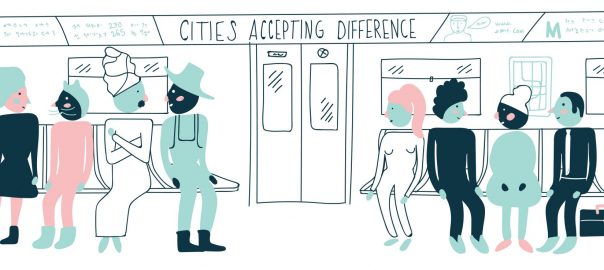
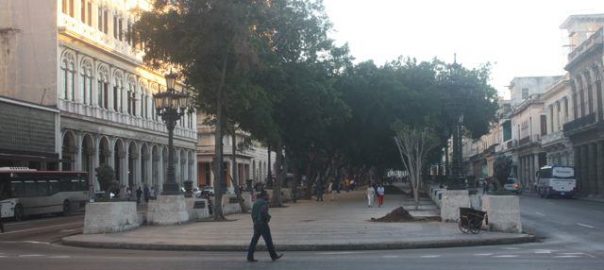
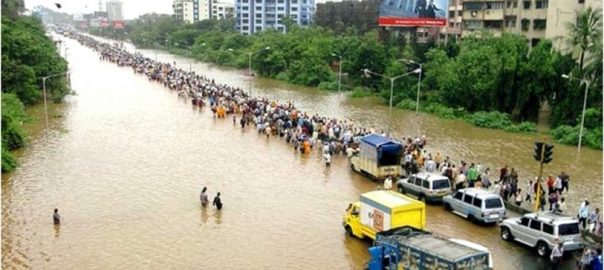
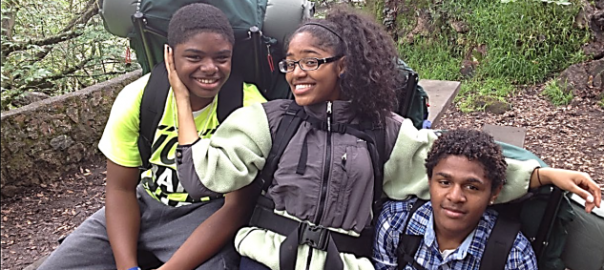
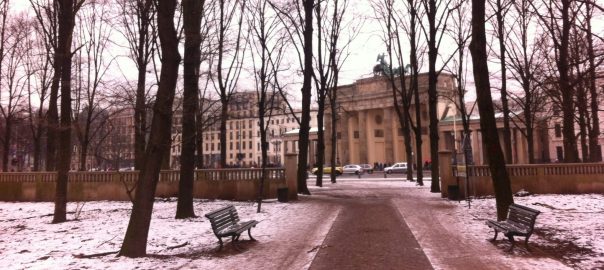
Leave a Reply